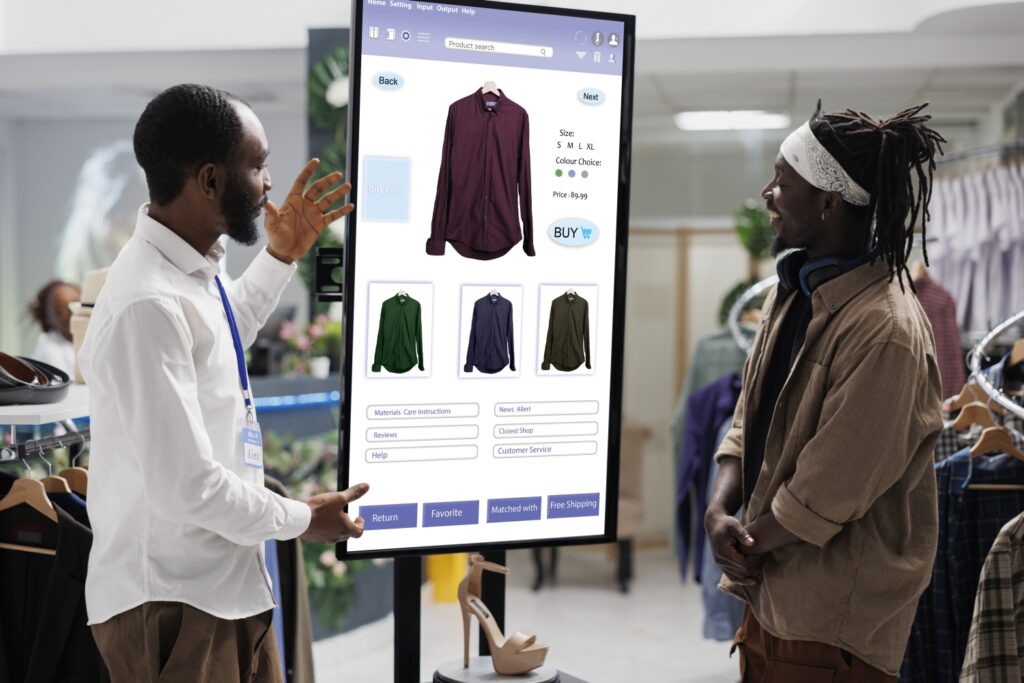In today’s digital world, capturing consumer attention has become increasingly challenging for marketers. Interactive advertising is an approach that’s changing the way brands connect with their target audiences. This blog post will explore the concept of interactive advertising, its various types, and how it’s influencing the marketing landscape.
What is Interactive Advertising?

Interactive advertising refers to promotional content that encourages active participation from the audience. Unlike traditional passive ads, interactive ads invite users to engage directly with the content, creating a two-way communication channel between the brand and the consumer. This approach aims to capture attention and potentially enhance brand recall and user experience.
Types of Interactive Advertising
- Interactive Display Ads: These are digital advertisements that allow users to interact with the content through clicks, swipes, or other actions. They often include games, quizzes, or product demonstrations.
- Interactive Banner Ads: Similar to display ads, these are placed on websites and encourage user interaction within the banner itself.
- Augmented Reality (AR) Ads: These ads use AR technology to overlay digital content onto the real world, often through smartphone cameras.
- Virtual Reality (VR) Ads: VR ads create immersive experiences that transport users to virtual environments where they can interact with products or brand stories.
- Interactive Video Ads: These videos pause at certain points, allowing viewers to make choices that influence the ad’s narrative or outcome.
- Social Media Interactive Ads: Leveraging social media platforms, these ads encourage likes, shares, comments, and other forms of engagement.
Gamification is the Future of Interactive Marketing
Create Online Lotteries, Quizzes, Prediction games, Branded Mini Games and much more without writing a single line of code and achieve 80% better conversion.
Interactive Advertising Examples
To better understand interactive advertising, let’s look at some examples:
- Burger King’s “Burn That Ad” Campaign: This AR-based campaign allowed users to “burn” competitors’ ads using their smartphones, revealing a Burger King coupon.
- Netflix’s Bandersnatch: While primarily a TV show, this interactive film doubled as an innovative form of advertising for Netflix’s capabilities.
- IKEA’s AR App: This app lets users virtually place IKEA furniture in their homes before purchasing, blending utility with interactive advertising.
- Spotify’s Year Wrapped: This annual campaign creates personalized, shareable content based on users’ listening habits, encouraging social media interaction.
Potential Benefits of Interactive Advertising
Interactive ads may offer several advantages over traditional advertising methods:
- Increased Engagement: By actively involving the audience, these ads aim to capture and hold attention more effectively.
- Enhanced Brand Recall: The interactive experience may make the brand more memorable to consumers.
- Data Collection: User interactions can provide data about consumer preferences and behaviors.
- Conversion Rates: The engaging nature of these ads might lead to higher conversion rates.
- Personalization Opportunities: Interactive ads can be tailored based on user responses, creating more relevant experiences.
The Future of Advertising: Gamification Marketing
As we look to the future of interactive advertising, one trend that’s gaining attention is gamification marketing. This approach applies game-design elements and principles to marketing strategies, creating potentially more engaging experiences for consumers.
Gamification incorporates elements like point systems, leaderboards, challenges, and rewards. This approach aims to make the advertising experience more enjoyable for users and potentially boost engagement and brand loyalty.
By implementing gamification in your marketing strategy, you might:
- Increase user engagement and time spent with your brand
- Encourage repeat interactions
- Collect data on user preferences and behaviors
- Create opportunities for social sharing
- Improve learning and retention of product information
In conclusion, interactive advertising represents a tool in the modern marketer’s toolkit. As consumer expectations continue to evolve, brands that explore interactive and gamified approaches may be better positioned to capture attention, build relationships, and drive conversions in the digital marketplace.
If you’re interested in exploring how gamification could fit into your marketing strategy, consider booking a call with experts at https://adact.me/getting-started/ to learn more about this approach.

